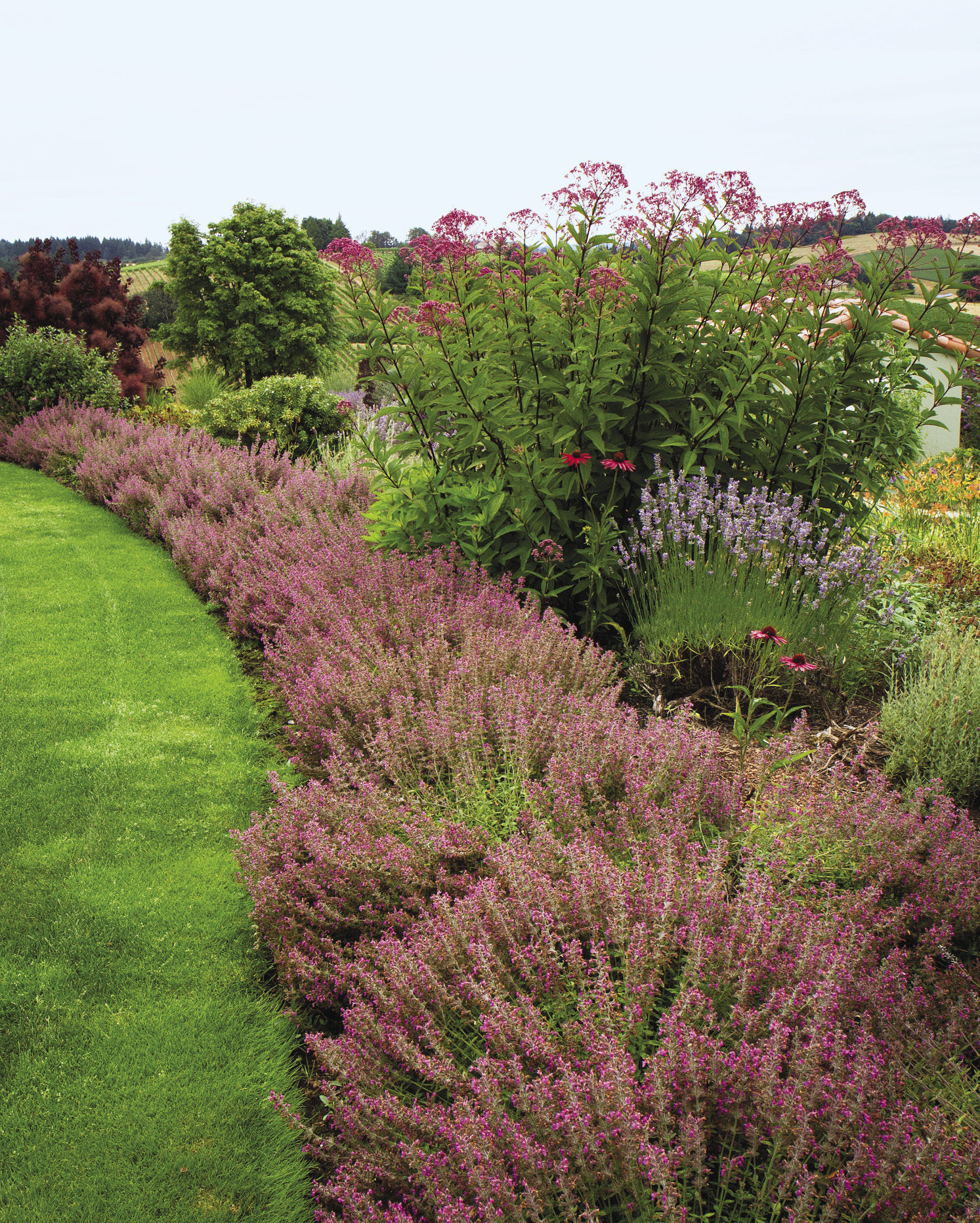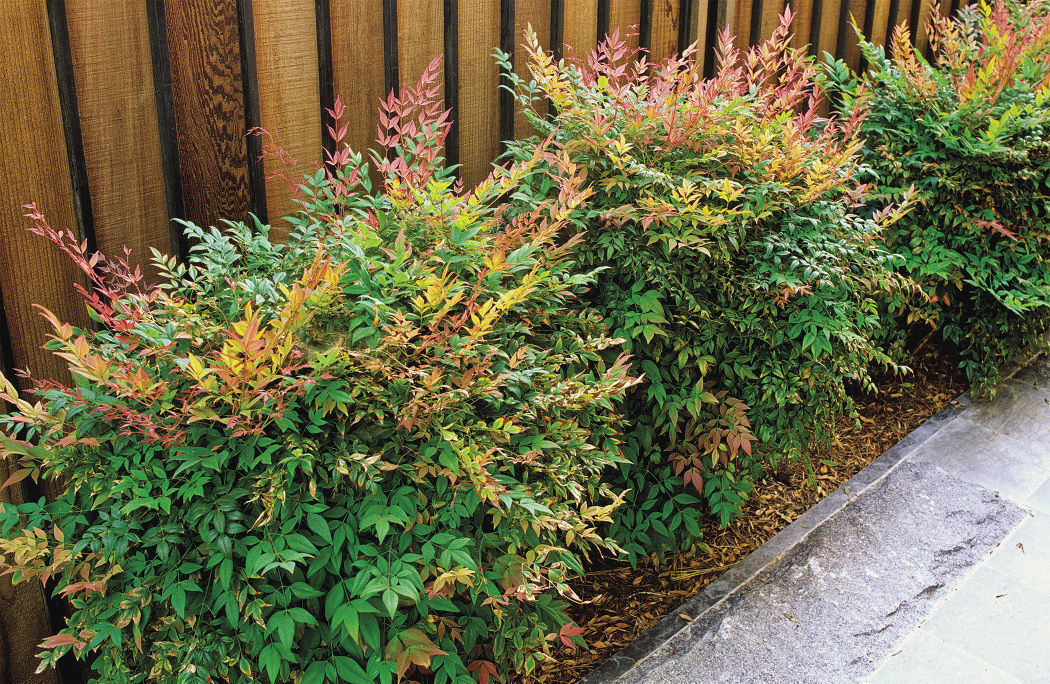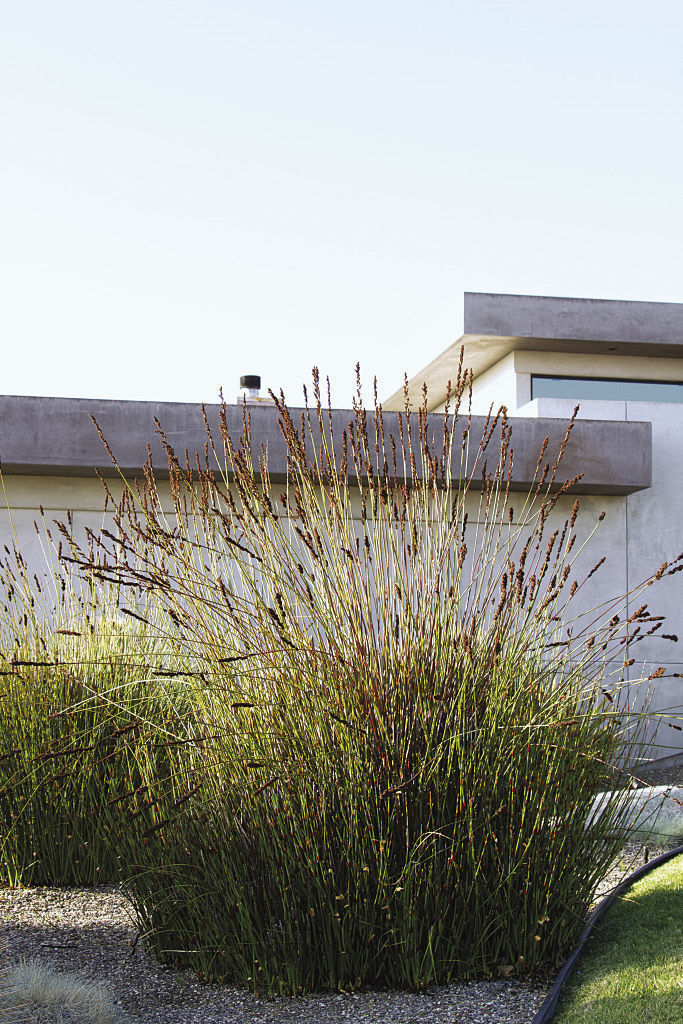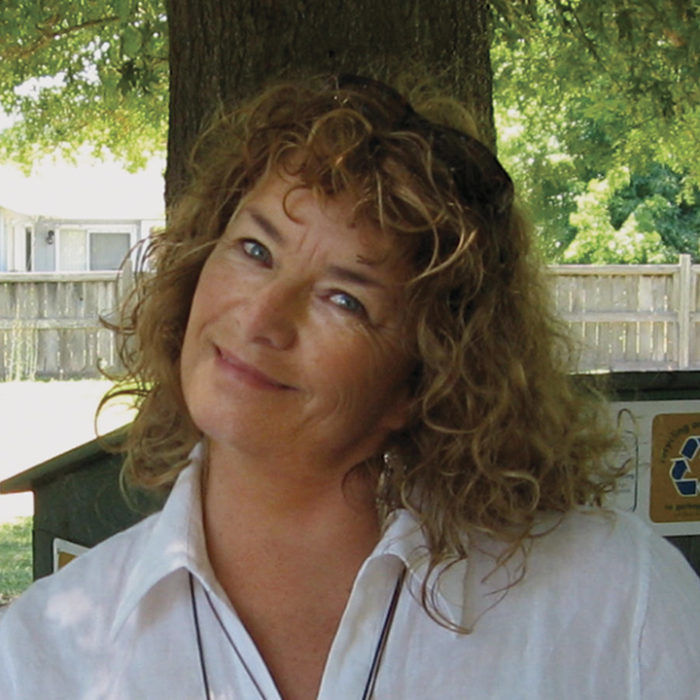
Northern California

Germander (Teucrium chamaedrys)
USDA Hardiness Zones: 4 to 9
Size: 1 to 2 feet tall and 3 feet wide
Conditions: Full sun; well-drained soil
Germander is an aromatic, drought-tolerant, deer-resistant perennial that nicely overwinters here. It’s a wonderful border or edging plant, and is often used in knot gardens and around formal garden displays. Left to sprawl, the plants become intertwined, creating a solid pink carpet. I especially love the look of germander in early spring, when the gray-green leaves are young and the clumps are mounded.

‘Gulf Stream’ heavenly bamboo (Nandina domestica ‘Gulf Stream’)
Zones: 6 to 11
Size: Up to 42 inches tall and 3 feet wide
Conditions: Full sun to partial shade; prefers sandy loam with good drainage but tolerates most soils
This hardy and virtually pest- and disease-free semidwarf evergreen heavenly bamboo performs beautifully year-round. A compact, mounded habit; moderately fast growth; and intense red fall color make ‘Gulf Stream’ one of the best heavenly bamboos you’ll find in northern California. It’s drought tolerant and deer resistant, and it tolerates heavy frost. Use this plant along a foundation, or plant it in swaths for color interest and seasonal impact. It’s a perfect fit for any garden style.

Large Cape rush (Chondropetalum elephantinum)
Zones: 9 to 11
Size: 4 to 6 feet tall and wide
Conditions: Full sun to partial shade; well-drained soil
A South African native, this variety of Cape rush is similar to the more common small Cape rush (C. tectorum, Zones 9–11), only larger. The vertical grasslike stems of large Cape rush have dark green joints and mahogany bracts, and they form an elegant clump with a striking architectural structure, which works well with vertical hardscapes or as a stand-alone focal point. It’s evergreen in northern California, and it is deer resistant. I love how the reeds move with the wind. I often plant large Cape rush against a stucco- or stone-wall backdrop to highlight its superb form.

Jerusalem sage (Phlomis fruticosa)
Zones: 7 to 11
Size: 6 feet tall and 4 feet wide
Conditions: Full sun; well-drained soil
Jerusalem sage begins its performance in midspring, continues well into summer, and often blooms again in fall. I have deadheaded it after it blooms, but sometimes I just leave it alone to do its own thing—and I still get a great repeat performance. I love how it overwinters, always keeping a structural presence in the garden while other plants are resting in dormancy. Plant Jerusalem sage in large swaths on terraces or slopes, or pair it with clusters of deep purple–flowered ‘Eleanor Roosevelt’ bearded iris (Iris ‘Eleanor Roosevelt’, Zones 3–9).

Susie Dowd Markarian is a garden designer who lives in Santa Rosa, California.
Photos: Doreen Wynja; Courtesy of Susie Dowd Markarian; Jerry Pavia; Joshua McCullough/phytophoto.com

















Comments
Log in or create an account to post a comment.
Sign up Log in